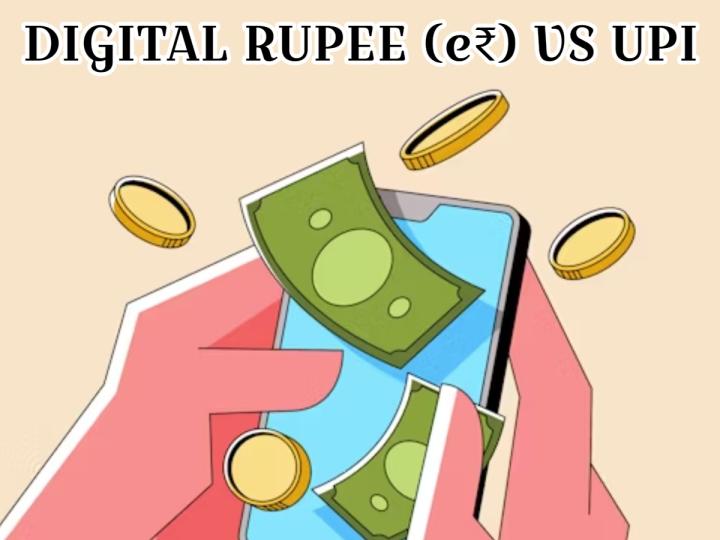
India’s digital payment landscape is evolving rapidly. After the tremendous success of UPI (Unified Payments Interface), the country is stepping into a new financial era with the Digital Rupee (e₹).
While UPI revolutionized how Indians transfer money, the Digital Rupee is set to redefine what money itself means. But how are they different? And will one replace the other? Let’s break it down simply.
👉 Also Read: Semicon India 2025: How India is Building its Chip Powerhouse
UPI (Unified Payments Interface) was launched in 2016 by the National Payments Corporation of India (NPCI). It connects multiple bank accounts into a single mobile application, allowing instant money transfers anytime, anywhere.
Apps like Google Pay, PhonePe, Paytm, and BHIM made it easy to send or receive money using just a mobile number or QR code. UPI doesn’t create new money — it simply moves existing money between bank accounts.
In short, UPI is a payment system that enables fast, secure, and cashless transactions between banks.
The Digital Rupee, or e₹, is India’s official digital currency issued by the Reserve Bank of India (RBI). Unlike UPI, which relies on bank accounts, the Digital Rupee itself is the money — just in a digital form.
Think of it as the electronic version of cash. It holds the same value as the physical rupee but is stored in a secure digital wallet. You can use it to make transactions without necessarily involving a bank every time.
The Digital Rupee is part of the RBI’s Central Bank Digital Currency (CBDC) project, launched in pilot mode in 2022 and gradually expanding nationwide in 2025.
Both UPI and the Digital Rupee are part of India’s digital payments ecosystem, but they serve very different purposes.
UPI acts as a bridge between bank accounts. When you pay via UPI, your money moves from your bank account to someone else’s instantly, using an app like PhonePe or Paytm. It’s a method of transferring funds, not a form of money itself.
Digital Rupee, on the other hand, is actual digital money issued directly by the Reserve Bank of India. You hold it in an RBI-backed wallet instead of a bank account. Transactions can happen from one wallet to another — similar to sending cash but in digital form.
UPI depends on banks and intermediaries, while the Digital Rupee runs on a sovereign blockchain-based system directly managed by the central bank. It’s more private, more secure, and could even work offline in the future.
In essence:
UPI moves your existing bank money.
Digital Rupee is your money, digitally issued by the RBI.
The introduction of the Digital Rupee isn’t just about going cashless — it’s about modernizing the entire financial system.
Here’s why the RBI introduced it:
Reduce dependence on cash — lowering printing and handling costs.
Faster and more secure transactions — without third-party intermediaries.
Financial inclusion — allowing even unbanked citizens to transact digitally.
Strengthen India’s digital economy — integrating blockchain with currency.
Compete globally — as many countries, like China and the EU, are developing their own CBDCs.
👉 Also Read: Ethereum Foundation: Building the Future of Blockchain Innovation
No — not anytime soon.
Both systems are designed to complement each other, not compete.
UPI will continue handling bank-to-bank transfers, while the Digital Rupee will enable direct wallet-based transactions issued by the RBI. In the near future, you may even use your favorite UPI apps to send Digital Rupees directly once integration becomes available.
So instead of replacing UPI, the Digital Rupee will make India’s payment system even more powerful and flexible.
For consumers, the Digital Rupee means faster transactions, more privacy, and reduced dependence on banks.
For businesses, it brings lower transaction costs, instant settlements, and fewer intermediaries.
For the economy, it promotes transparency, reduces counterfeit risks, and supports India’s goal of becoming a cash-light digital nation.
Economists predict that by 2026, the Digital Rupee could handle nearly 10% of India’s total digital transactions, particularly in government and corporate sectors.
UPI will likely continue dominating small retail payments, while the Digital Rupee could emerge as the preferred mode for secure and large-value transactions.Together, they represent the twin engines driving India’s next phase of financial innovation.
1. Is Digital Rupee the same as cryptocurrency?
No. The Digital Rupee is issued and regulated by the RBI, while cryptocurrencies are decentralized and privately managed.
2. Can I use Digital Rupee on UPI apps?
Not yet everywhere, but major apps like Paytm and BHIM are testing integration.
3. Is my money safe in the Digital Rupee wallet?
Yes, since it’s issued by the RBI, it’s as secure as holding physical cash.
4. Can the Digital Rupee work offline?
Yes, the RBI is testing limited offline payment features in select regions.
5. Will the Digital Rupee replace cash completely?
No, it will complement cash and digital payments, not eliminate them.
The Digital Rupee (e₹) and UPI are not rivals — they’re two sides of India’s digital payment evolution.
UPI made transactions instant and easy, while the Digital Rupee is taking the bold step of turning currency itself into code.
As India leads the global fintech revolution, the combination of UPI and the Digital Rupee will define the future of how we pay, save, and invest.
👉 Explore more fintech insights on TrendifyBuzz Finance Section




